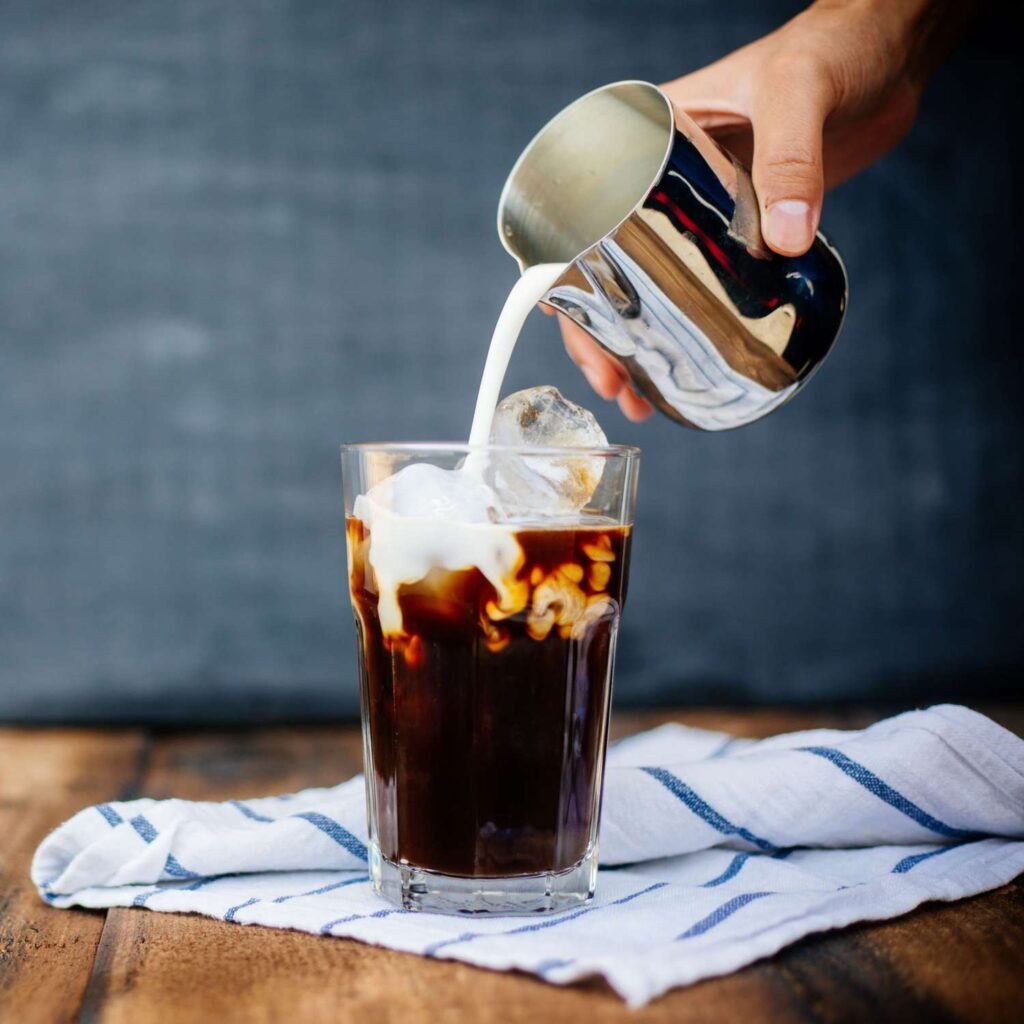- Instead of using pre-ground coffee, choose to grind whole beans just before brewing.
- Most people use more coffee than they need. Start with 1 to 2 tablespoons per 6 ounces of water.
- There are better ways to ice a coffee than the fridge, and the type of water is also important.
As a born-and-raised Florida girl, I grew up drinking iced coffee year-round. And even though I’ve since moved to Alabama, where the weather gets much colder, I’m still known to be sipping a cold brew through mid-November.
I’m a big fan of fancy and pricey iced lattes and cold brew from coffee shops. However, my wallet is not. So, in an attempt to save some money, I’ve been trying to make my iced coffee at home. I was curious to see how I could make my iced coffee taste like the drinks I get from my local barista. So I tapped Giorgio Milos, Specialty Coffee Association-certified master barista for illycaffè, for the full scoop. Here are five iced coffee mistakes he says you’re probably making at home—plus, what to do instead.
Iced Coffee Mistakes You Could Be Making—Plus What to Do Instead
You’re buying ground coffee.
Milos is a big fan of buying whole-bean coffee. He says, “Grinding fresh beans right before the brew really makes a big difference in the final taste in your cup of coffee.”
But don’t just whip out a blender or old spice grinder to grind your coffee (seriously, please don’t). You should be using a burr grinder made for coffee beans—the blades (or stainless-steel burrs) create a much more uniform grind, resulting in a smoother cup of coffee.
If you prefer the taste or convenience of pre-ground coffee, Milos says to purchase a variety that’s sealed in an airtight, pressurized can.
You’re not storing beans correctly.
Milos says, “To preserve your beans’ freshness as long as possible, you want to store them in a sealed, airtight container, avoid clear containers, and keep them in a dark, room-temperature location.”
To prevent wasted or stale coffee, Milos recommends only buying the amount of coffee that your household will use within 1 to 2 weeks. He says, “Once your beans are exposed to air, they will start to lose some of their freshness. The longer it takes for you to enjoy your beans, the more the level of quality will start to decrease. This is especially true for pre-ground coffee because there’s increased exposure to oxygen.”
Your coffee-to-water ratio is off.
When it comes to brewing a great cup of iced coffee, the ratio can make or break your brew. Milos says that most people tend to use way more coffee than they really need. (Side note: I really struggle with this—my coffee is either way too weak or way too bitter and strong.)
He says, “For home brewing, I always recommend starting with a standard ratio of 50-60 grams of coffee per liter of water. From here, you can adjust to your taste.” (Translation: That’s about 1-2 tablespoons per 6 ounces of water. However, you should take into account that modern-day coffee cups are about 12 ounces instead of 6-ounce demitasses.)
You’re just putting hot coffee in the fridge.
Although it may seem more convenient to brew a big pot of coffee at the beginning of the week and leave it in the fridge for “iced” coffee, Milos says that’s not the way to go. “Refrigerating coffee promotes rapid and prolonged oxidation over time, doing irreparable harm to coffee’s essential, aroma-harboring oils, accompanied by fast-escalating acidity,” he says. In other words, your coffee could potentially taste acidic and/or stale.
Milos says he likes to brew his iced coffee using a Chemex and pour the brew over ice. He says, “Hot water extracts the ideal flavors and aromatics in ground coffee, yielding intriguing tasting notes that instantly blossom on the palate, just as the coffee-ice contact cools the extraction down and locks in that flavor.”
If you don’t have a Chemex, you can brew your coffee double-strength in a drip brewer and pour it over ice. Since it’s a much stronger brew, it can stand up to the dilution.
You could be using the wrong type of water or ice (seriously).
Like most people, you probably haven’t thought much about the water you’re brewing your coffee with. But Milos says, “Water is up to 99% of your coffee (depending on your method of extraction), so using good water is fundamental.”
Milos says to pay attention to any “off” tastes like chlorine or salt, and if you really want to geek out, you can test for TDS (total dissolved solids) with a water quality meter. Milos says that the TDS should be about 150mg/L. He says anything with TDS under 75 is considered soft and anything over 250 is considered hard. He adds, “Tap is OK if it tastes good and is free of chlorine. Filtered water is better unless it’s soft in minerals. Spring water (bottled water) is best unless it’s hard in minerals and tastes slightly salted.”
Another important H2O fact to note? Temperature *really* matters. Milos says to never use boiling water when brewing coffee “because it burns some of the aromatic components and the coffee will taste bitter.” He adds, “Usually the best temperature is between 195-205℉, but different methods require different temperatures.” (You can find more on ideal brewing temps from the SCA, here.)
An electric gooseneck kettle can help you get temperatures precise for brewing methods such as French press, Chemex or other pour-over coffee methods.

